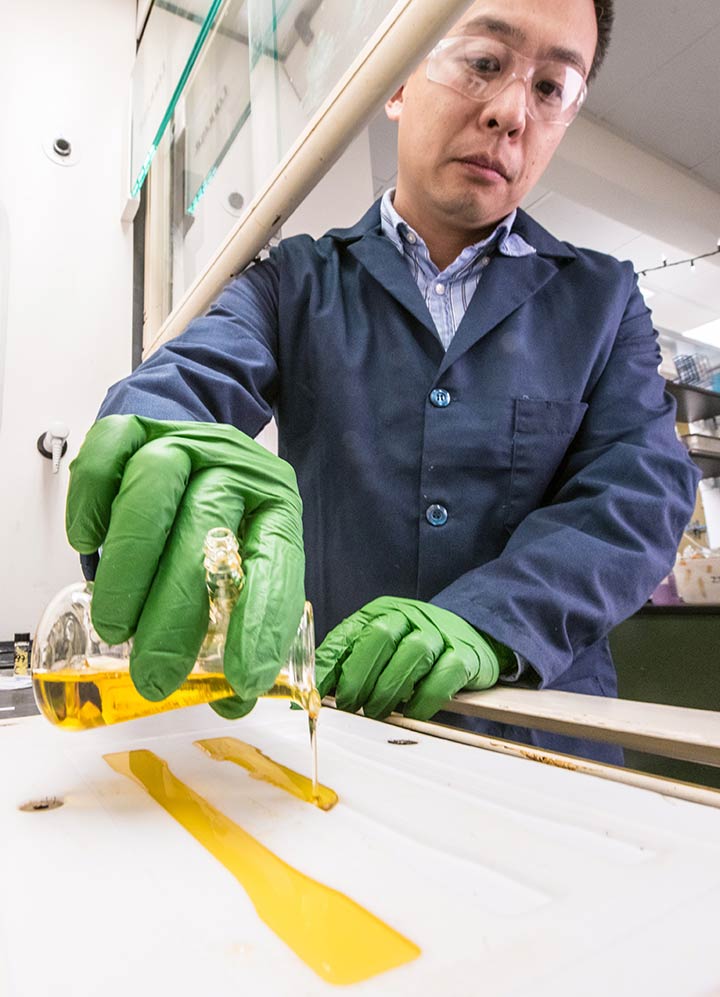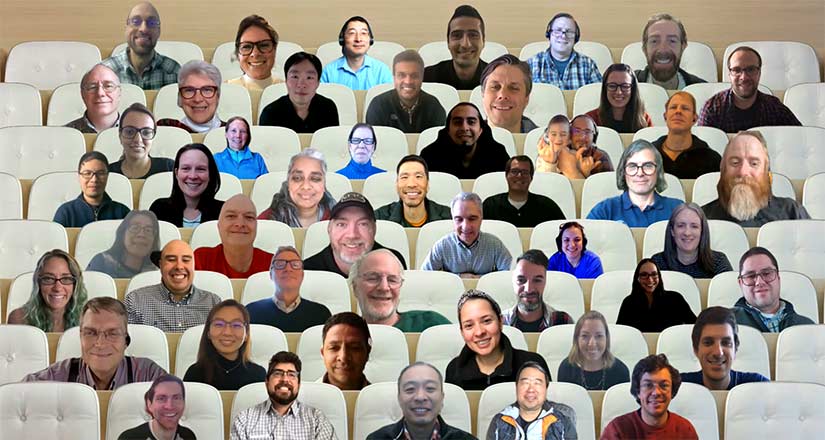Energy I-Corps Just Keeps Growing
New Record of 18 Research Teams Heading Towards Commercialization

If Energy I-Corps is any indication, interest in commercialization across the national laboratory system is high.
The program, managed by the National Renewable Energy Laboratory (NREL) for the Department of Energy's (DOE’s) Office of Technology Transitions, is a two-month bootcamp for national laboratory researchers interested in getting their technologies out into the marketplace. Each year, the program accepts two cohorts of teams recommended by the DOE program offices, such as solar, wind, and bioenergy.
Last fall’s cohort included 17 teams, which was a new high; and this spring’s cohort is even larger, at 18 teams, even though the program is being held virtually for the time being.
Shelly Curtiss, Energy I-Corps program manager, said that the timing seems right.
“There's so much activity in commercialization in general, and the DOE is putting the focus on tech transfer within the national lab system,” she said. “We’ve put all this investment into energy technologies, and now we want to guide those innovations from the lab into the marketplace.”
Curtiss said that the interest is not just coming from the direction of leadership, but from the researcher community as well. This spring’s class showed expanded participation from the DOE program offices, including the second team nominated by the DOE’s Office of Science and the first team from the National Energy Technology Laboratory (NETL).
“Researchers are recognizing this as a creative educational opportunity,” Curtiss said. “With the new administration, it’s the perfect time to really focus on moving lab-developed technology out of the labs and into the market.”

Here are the newest Energy I-Corps teams from around the national lab system:
- Bio-NIPU, NREL: Tao Dong, Tuong Bui, Alice Havill, Tim Beranek
- BioPack-ML, Los Alamos National Laboratory (LANL): Carl Iverson, PI, Joseph Dumont, EL, Eric Klingenberg
- CO2 Converters, Argonne National Laboratory: Di-Jia Liu, Haiping Xu, David Carter, Michael Gurin
- Data Driven Material Development, Sandia National Laboratories (SNL): Hojun Lim, David Montes de Oca Zapiain, Mark Chavez
- EC-Leach, Idaho National Laboratory: Luis A. Diaz Aldana, Mark Strauss, Juan Carlos Villatoro
- e-Mission, NREL: K. Shankari, Joe Fish, Leidy Boyce, Marcelo Simas, Stacey Bricka
- EPDR, SNL: Issac C Aviña, Fred Patrick Doty, Bill Hartman
- FreeSpace Tank Team, NREL: Paul Torcellini, Sammy Houssainy, Peter Turnbull
- INN-Design, NREL: Ganesh Vijayakumar, Andrew Glaws, Gregory Oxley
- IrrigationViz, Idaho National Laboratory/Pacific Northwest National Laboratory (PNNL): Shiloh Elliot, James Kershaw, Jeff Smyth
- Microwave Assisted Catalysis, NETL: Daniel Hayes, Christina Wildfire, Kerry Hanahan
- RBLO, NREL: Shawn Sheng, Yi Guo, Caitlyn Clark, Mike Kelly
- RECOVER, PNNL: Suh-Jane Lee, Wenbin Kuang, Leo Fifield, Philip Taynton
- TAP, NREL: Heidi Tinnesand, Sagi Zisman, Dmitry Duplyakin, Erika Boeing
- THERMS, SNL: Clifford Ho, Kyle Guin, Henk Laubscher, Steve Willard
- UBEM, Lawrence Berkeley National Laboratory: Tianzhen Hong, Kaiyu Sun, Lowell Chu
- UltraSep, LANL: Jim Coons, Colleen Pastuovic, Ann Adams
- Water Energy Systems for Advanced Purification, PNNL: Juan A. Lopez-Ruiz, Ismael Rodriguez-Perez, Jeff Presley
One of the most impactful aspects of the program is its mentorship component. During their participation in the program, national laboratory researchers work closely with industry mentors.

The research teams benefit from learning about the current status and future needs of the market for innovative energy technologies. But the mentorship aspect is two-way, according to John Meissner, a past mentor who encourages other private-sector participants to get involved.
Based in Oakland, California, Meissner is the founder of MXV Ventures and works with various partners across the national laboratory system, through programs like Energy I-Corps and LabStart.
Meissner champions the national laboratory system in the startup community as a source of breakthrough innovation.
“The national lab system is very different from the world of commercial R&D. These are career scientists and engineers who have a passion for the subject they are studying, and they are laser-focused on it,” he said. “I tell people that mentoring is a wonderful networking opportunity. This is some of the best scientific and engineering talent in the world, working on foundational questions with the potential for breakthrough market impact.”
As an industry mentor working with Energy I-Corps, Meissner was able to offer National Wind Technology Center researchers the benefit of industry perspective. In the case of the wind team OpenOA in cohort 11 in 2020, Meissner worked with them on the role their technology should play in the industry.
Energy I-Corps mentorship opportunities go beyond wind to include technology innovation in nuclear, environmental services, water, chemical and material sciences, solar, and more. Past team descriptions are listed on the Energy I-Corps website.
Energy I-Corps is a part of NREL's Innovation and Entrepreneurship Center.
Moving forward with Energy I-Corps, Curtiss said, the big question is how to build on success. Hopefully the program will continue to grow with every new class.
“The challenge, and opportunity, is now to scale up,” she said.
Last Updated May 28, 2025
